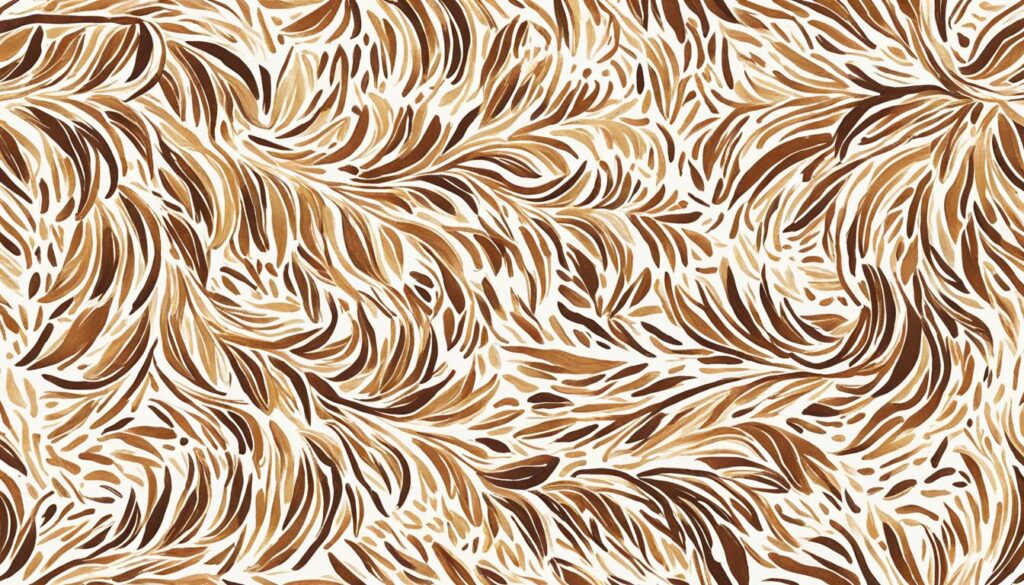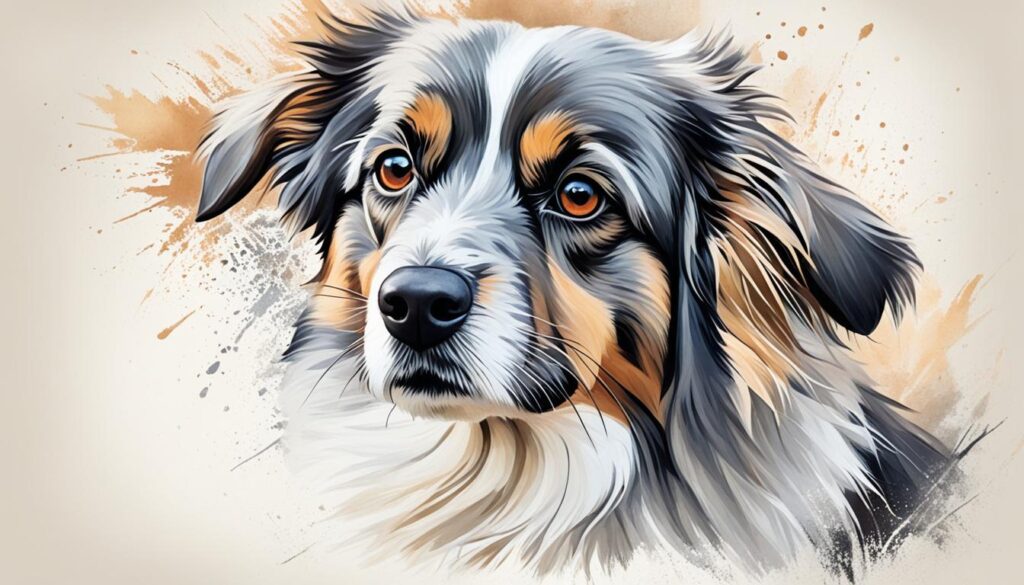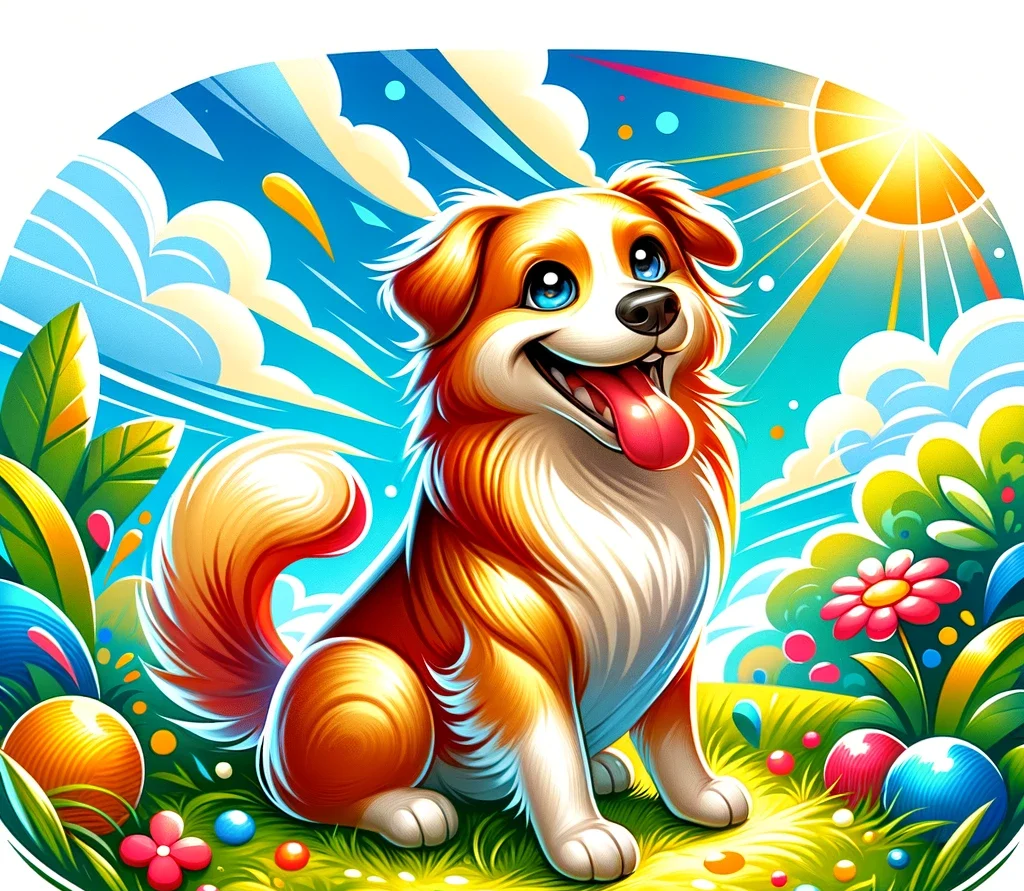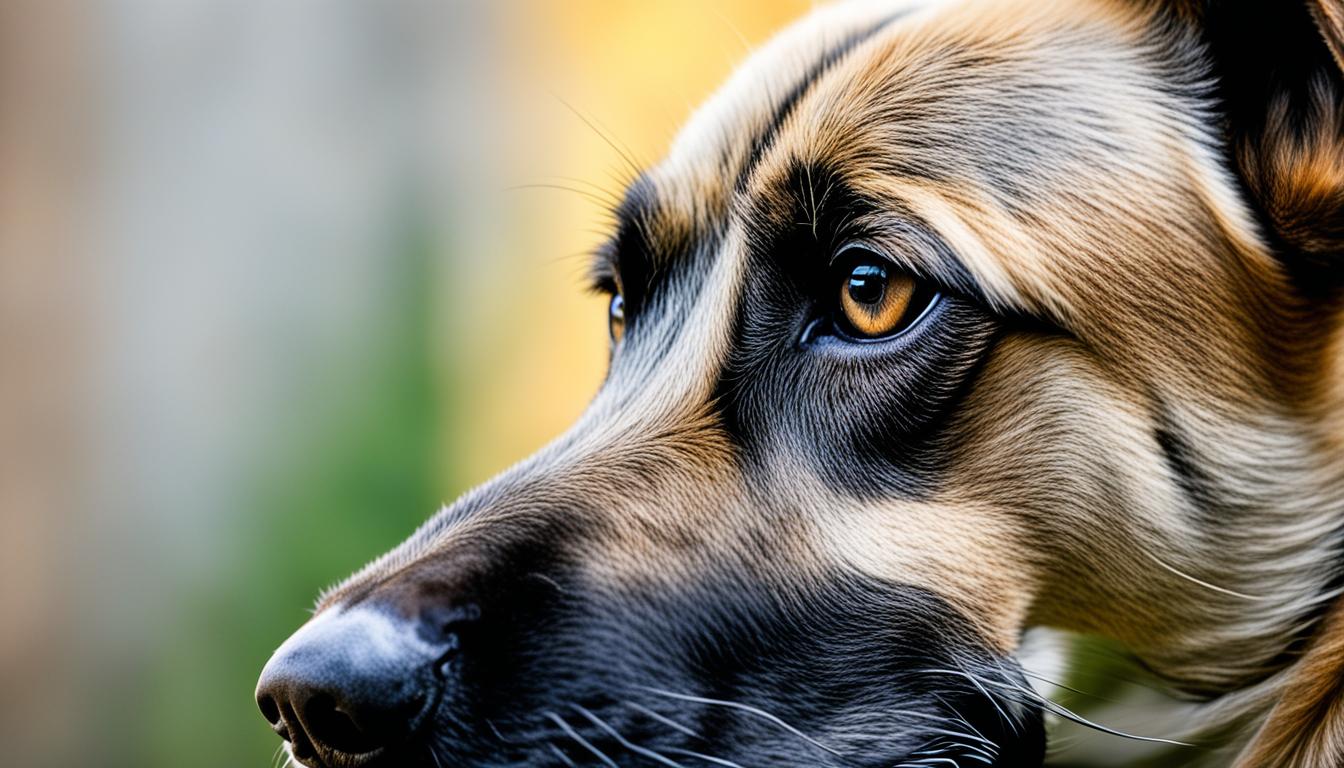As an Amazon Associate I earn from qualifying purchases.
Remember that moment when your dog’s goofy grin or majestic poise just begged to be immortalized? That’s where the magic of a canvas comes in. If you’re ready to tackle the delightful challenge of how to do a painting of your dog, you’re not just dabbling in paints; you’re about to capture a piece of your heart. This isn’t your average art project—it’s a labor of love, a dog portrait painting guide to bring the essence of your canine companion to life. So let’s embark on this playful quest of capturing your dog in a painting, transforming woofs into wonderful works of art. We’ve got the guide; you’ve got the muse—let’s get those tails wagging onto the canvas!
Key Takeaways
- Discover the joy and artistry of painting your dog by capturing their unique charm.
- Learn essential techniques and tips from our comprehensive dog portrait painting guide.
- Find out the supplies you’ll need and how to set the stage for a successful pet portrait.
- Get insights into preserving your dog’s personality in your artwork as you learn how to do a painting of your dog.
- Bring your furry friend’s spirit to life through the transformative process of creating a portrait.
Gathering the Right Materials for Your Dog Portrait
Before you embark on the tail-wagging adventure of creating a portrait of your dog, it’s essential to equip yourself with the ideal arsenal of materials. A paw print here and a brush stroke there is great, but a strong foundation ensures that your painting tutorial for your dog is set for success. Let’s dive into the specifics to ensure your artwork is nothing short of paw-some!
Choosing the Right Canvas
When contemplating the vast array of canvases, consider one that can showcase your dog’s personality. Think of the canvas as your furry friend’s stage – where every glance and playful smirk comes to life!
Selecting Paints and Brushes
Your choice of paints and brushes can make or break your masterpiece. You’ll want hues that bring out the sparkle in your pup’s eyes and brushes that can detail every strand of their unique fur.
Setting Up Your Workspace
A well-organized workspace is your command center, free from the chaos of chew toys and doggy snacks. Keep it tidy and tranquil – a haven where creativity flows and your dog’s essence is captured without any mishaps.
| Material | Purpose | Tips |
|---|---|---|
| Canvas | Backbone of your painting | Opt for a size that lets your dog’s spirit fill the space |
| Acrylic Paints | Vivid colors that last | Keep a range of colors to accurately match your dog’s coat |
| Brushes | Your primary tools for detail | Use a blend of sizes for precision and texture |
| Easel | Stabilize your canvas | A sturdy easel will prevent any wobble-induced mishaps |
| Palette | Mixing your colors | A spacious palette allows for ample mixing area and color testing |
Planning Your Composition: Capturing Your Dog’s Personality
When you’re ready to start the step-by-step dog painting process, it’s time to let your canine’s character shine. Position your pal in a way that says more than ‘sit’ or ‘stay’—capture that playful tilt of the head or the noble stance they take when scouting the yard. Your painting should tell your dog’s tale just as eloquently as their bark does.
Finding the Perfect Pose
Deciding on the perfect pose involves understanding your dog’s daily routines and quirky habits. Is it the goofy sprawl on the lawn or the alertness in their favorite lookout spot? Pick a pose that will let those who know your dog say, “That’s so him!”
Understanding Lighting and Shadow
Light and shadow aren’t just for mood—they sculpt your subject, giving life to those soft fur textures. Think of how the light dances across their coat on a sunny day or how their eyes catch the moonlight during nocturnal escapades. Play with lighting to add depth and motion to your piece.
Considering Background Elements
No portrait is an island, and your dog’s is no exception. The right background tells the story of your shared adventures, be it the dog park blur behind a sprinting figure or the well-loved couch they claim as their throne. Choose elements that frame their personality, not overwhelm it.
| Technique | Description | Tips |
|---|---|---|
| Pose Selection | Choosing a natural and expressive stance for your dog. | Observe your pet’s behavior to identify a signature pose. |
| Light and Shadow | Using lighting to enhance your dog’s features and form. | Consider the time of day and environment that best reflects your dog’s spirit. |
| Background Storytelling | Adding elements that reveal your dog’s character and environment. | Include favorite toys, locations, or activities in the backdrop. |
Creating the Initial Sketch of Your Beloved Dog
Now that your stage is delightfully prepped, it’s time to dive into the charming world of sketching. Don’t let the term ‘sketching’ intimidate you; you’re simply laying down the playful groundwork for your dog portrait painting guide. So, let’s not beat around the bushy tail—start with graceful strokes and geometric shapes to establish a jovial framework for your dog’s silhouette.
Here’s a hot tip: it’s not about crafting a paw-fect replica on your first try. The essence shines through the attitude and posture, so focus on those wag-worthy qualities that make your companion uniquely ‘them’. Your sketch will act as a barking-good blueprint for the masterpiece to come.
Painting tips for your dog portrait:
- Loosen up—stiff lines are a no-go when drawing your lively pooch
- Keep it light and airy to start; remember, erasers are an artist’s best friend
- Study photos of your pup from different angles to get a 360-degree feel
Remember, every dog’s a work of art—dynamic, vibrant, and brimming with personality.
Before you move on to the next stage, take a moment to step back and gaze upon your work with a soft eye. Adjust those shapes, perfect those lines, and when you’re content, you’ll realize you’ve just created the initial sketch of your beloved dog. Ready to move from here? Hold onto your brushes; it’s going to get paw-some from here on out!
| Part of Dog | Shape to Start | Tips |
|---|---|---|
| Head | Oval/Circle | Use intersecting lines for the eyes and nose placement. |
| Body | Rectangle/Oval | Sketch lightly to adjust the size easily as needed. |
| Legs | Cylinders | Notice and capture the joints for accurate posture. |
| Tail | Flexible line/Shape | Give it a natural flow, whether curly or straight. |
| Ears | Triangles or Loops | Depends on breed – let the shape reflect the character. |
As you admire your work, think of the sketch as your personal map, leading you ever closer to the treasure that is a heartwarming dog portrait. Smooth out lines, erase what doesn’t serve your vision, and before you know it, the very soul of your dog will begin to materialize on your canvas, thanks to yourdedication to following this dog portrait painting guide.
How to Do a Painting of Your Dog: The Underpainting Stage
Alright, Picasso-in-training, it’s time to tackle the underpainting stage, a cornerstone in mastering how to do a painting of your dog. Think of it as the foundation upon which your dog’s gloriously fluffy form will be built. You’re not just slapping paint down; you’re breathing life into each strand of fur, one brushstroke at a time.

Laying Down the First Layers
First things first, let’s whisper the canvas to life by softly brushing on the initial layers. This isn’t a race—it’s a rhythmic dance between your brush and the blank expanse. Your quest? To create a harmonious symphony of undertones that’ll set the mood for your canine muse’s visual limerick.
Building the Base Colors
As you populate your palette with a kaleidoscope of canine colors, focus on matching the base shades to your dog’s coat. This step is pure alchemy—mixing and blending until you summon the perfect hue that whispers, “Yes, that’s the color of my pooch’s soul.”
Working with Values and Tones
Now that the canvas is tinted with the ghost of your future masterpiece, it’s time to play with shadows and light. The key to a dog portrait that could wag its tail? Nailing the values and tones. They’re the subtle cues that hint at the roundness of a snoot or the velvety softness of those ears. Lean into these painting tips for your dog portrait, and watch as your flat shapes start cavorting in a three-dimensional dog park of your own creation.
Persevere through this stage, and you’re not just creating art – you’re concocting a potion of personality and presence. Don’t fret over perfection; you’re setting the stage for the magic that’s yet to come. Onward, daring dog da Vinci, there’s a masterpiece in the making!
Refining Your Dog Painting Techniques: Texture and Detail
You’ve laid down the colors, outlined the shape, and now, it’s crunch time. Your painting is about to go from a mere impersonation to an embodying of your fluffy sidekick. You’re at the crossroads of creativity where every brushstroke is a whisper of life into your canine canvas!
Adding Fur Texture and Fine Details
Let’s start with the fur, shall we? Fur isn’t just a blanket of color; it’s an orchestra of streaks, shades, and subtleties. Begin with thin, delicate strokes to suggest those fine hairs. Alternate between light flicks for that sun-kissed sheen and deeper shades for the mysterious shadows. It’s a delicate dance between your brush and the canvas – one that’s central to creating a portrait of your dog that’s teeming with texture.
Paying Attention to the Eyes and Ears
The eyes, ah, the windows to the soul! Nail this, and you’ve captured more than just a likeness; you’ve snared the spirit. Watch the glistening reflection in your pooch’s eyes, that slight asymmetry that adds character. And the ears—those radar dishes tuned to the frequency of treats—ensure they’re as soft and fluffy as the real deal. Your aim? To create a spark that only a true painting tutorial for your dog could breathe into life.
Realistic Touches That Bring Your Dog to Life
And now, for the pièce de résistance! The art of bringing your dog out of the canvas with those tiny, yet crucial, realistic touches. Perhaps it’s the gloss on the nose that suggests wetness or the shadow beneath the paws that roots your buddy to the ground. These aspects are the unsung heroes that transform your artwork from ‘just another portrait’ to a vibrant homage to your four-legged friend.
| Detail | Technique | Impact |
|---|---|---|
| Fur Texture | Thin, varied strokes | Adds depth and realism |
| Eye Sparkle | Targeted highlights | Instills a lifelike presence |
| Ear Fluffiness | Soft, rounded brushing | Enhances texture realism |
| Nose and Paw Detailing | Glossy and shadow effects | Brings the portrait to life |
Armed with these tips and a dash of patience, you’re well on your way to creating a portrait of your dog that’s brimming with charm and character. Go on, let those bristles dance—you’ve got this!
The Step-by-Step Dog Painting Process: Adding the Finishing Touches
You’re almost there, and it’s been quite the journey in the step-by-step dog painting process. Your canvas now showcases a fetchingly good depiction of your beloved dog, but it’s the final touches that will transform it from a mere painting to a true masterpiece. So, let’s dive in and give your dog the pedestal-worthy portrayal it deserves.

Enhancing Highlights and Shadows
Like the sun casting rays over a dog park, highlights have the power to bring energetic life to your painting. With delicate brush strokes, layer on the light where the sun naturally kisses your dog’s coat. But, don’t scrimp on those shadows either. Deepen the dark areas to add volume and form, making your pooch pop off the canvas.
Reviewing and Correcting Proportions
Stand back and tilt your head, maybe even squint a little. Review the proportions of your canine companion ensuring that each ear, eye, and paw is in true perspective. Adjust as needed because, in the world of dog portraits, proportion is the difference between a Great Dane and a Chihuahua.
Signing and Sealing Your Work
Who’s a good artist? You are! Now’s the time to flaunt it. Sign your name with a flourish to mark your creative territory. But wait, before you release this treasure into the wild, seal it with a protective varnish. It’s like a super-snuggly coat for your artwork, safeguarding it from dust, UV rays, and the occasional slobber.
And voila! You’ve just completed the paw-some process of painting your beloved dog. Now go ahead, hang that masterpiece and throw a bone to your inner artist—you’ve earned it.
Painting Tips for Your Dog Portrait: Common Pitfalls to Avoid
Before you dip your brush into the palette on this artistic endeavour, let’s paws and reflect on a few dog painting techniques that could save your portrait from being just another shaggy dog story. Getting to grips with these essential no-nos will ensure you’re capturing your dog in a painting as the masterpiece they truly are, not a pooch Picasso might have on a bad fur day.
Avoiding Overworking the Paint
You might want to keep layering paint until your dog’s portrait barks at you, but hold that brush! Overworking can turn a fabulous fur texture to a muddy mess, faster than you can say “fetch”. Keep strokes deliberate and avoid the compulsion to over blend, allowing the vibrancy of the paint to shine through like your dog’s joy when they see their leash.
Dealing with Color Muddiness
Capturing your canine’s color doesn’t mean painting the rainbow. Too many hues on your canvas and voila, you’ve got mud pie— not the russet tones of your retriever’s coat. Be strategic; build your paints layer by layer, clean your brush between colors, and use a restraint that would make even a trained pup sit up and notice.
Keeping Your Dog’s Character Intact
It’s the twinkle in their eye, the whimsy in their wag that you’re after. Locking in your dog’s character is what makes a portrait more than mere paint; it’s soulful. Keep checking in with your reference photo, or even better, your live model, to ensure that personality peeks through your painting as much as they peek through the kitchen door.
| Technique Tip | What it Does for Your Dog Portrait | Common Mistake |
|---|---|---|
| Minimal Brushwork | Keeps fur texture sharp and dynamic | Over blending to the point of no return |
| Color Layering | Creates depth and life-like quality | Combining too many colors at once |
| Character Focus | Ensures your dog’s essence shines | A portrait with no personality |
Conclusion
As the final brushstroke dries and you step back to admire the montage of memories you’ve created, the bond with your dog takes on a new, tangible form. This dog portrait painting guide has been more than just a set of instructions; it’s been an invitation to celebrate and eternalize the companionship and joy that your beloved dog brings into your life. Remember, each color mixed and each line drawn has captured more than an image — it has captured a sentiment.
Reflecting on the Dog Portrait Painting Guide
Reflecting on the journey you’ve embarked upon, consider how the pages of this guide have taught you to observe your pet’s quirks and qualities like never before. You’ve taken the abstract — the wags, the woofs, and the warmth — and converted them into strokes of brilliance on canvas. In learning how to paint your beloved dog, you haven’t just preserved a moment in time; you’ve created a legacy.
Sharing and Preserving Your Artwork
Now that your masterpiece is complete, it’s time to show the world or at least your friends and family. Share your artwork proudly; let it spark conversations and narrate stories about the subject that has moved your spirit enough to be immortalized in art. And let’s not forget about preservation — ensure that this token of affection is shielded from the elements, for a creation this special is meant to last for keeps.
Next Steps After Capturing Your Dog in a Painting
What’s the next stop on your artistic escapade? Perhaps, another dog portrait painting guide adventure awaits, or maybe you’ll now see the world through an artist’s eyes, seeking out your next muse. Whichever path you choose, the experience of capturing your beloved dog in a painting has surely equipped you with the eye for detail and the patience for creation that will stand you in good stead for all your future endeavors.
FAQ
What are the essentials to start painting my dog?
How do I pick the right pose for my dog’s painting?
How important is the initial sketch in creating my dog’s portrait?
Can you break down the underpainting stage when painting my dog?
Any tips for adding realistic textures to my dog’s portrait?
What should I focus on when adding final touches to my dog’s painting?
How do I prevent common pitfalls while painting my dog?
Acrylic Dog Painting Guide: Paint Your Pet Easily Artist Corner
As an Amazon Associate I earn from qualifying purchases.


[…] Paint a Portrait: How to Do a Painting of Your Dog Tail Wagging Hub […]